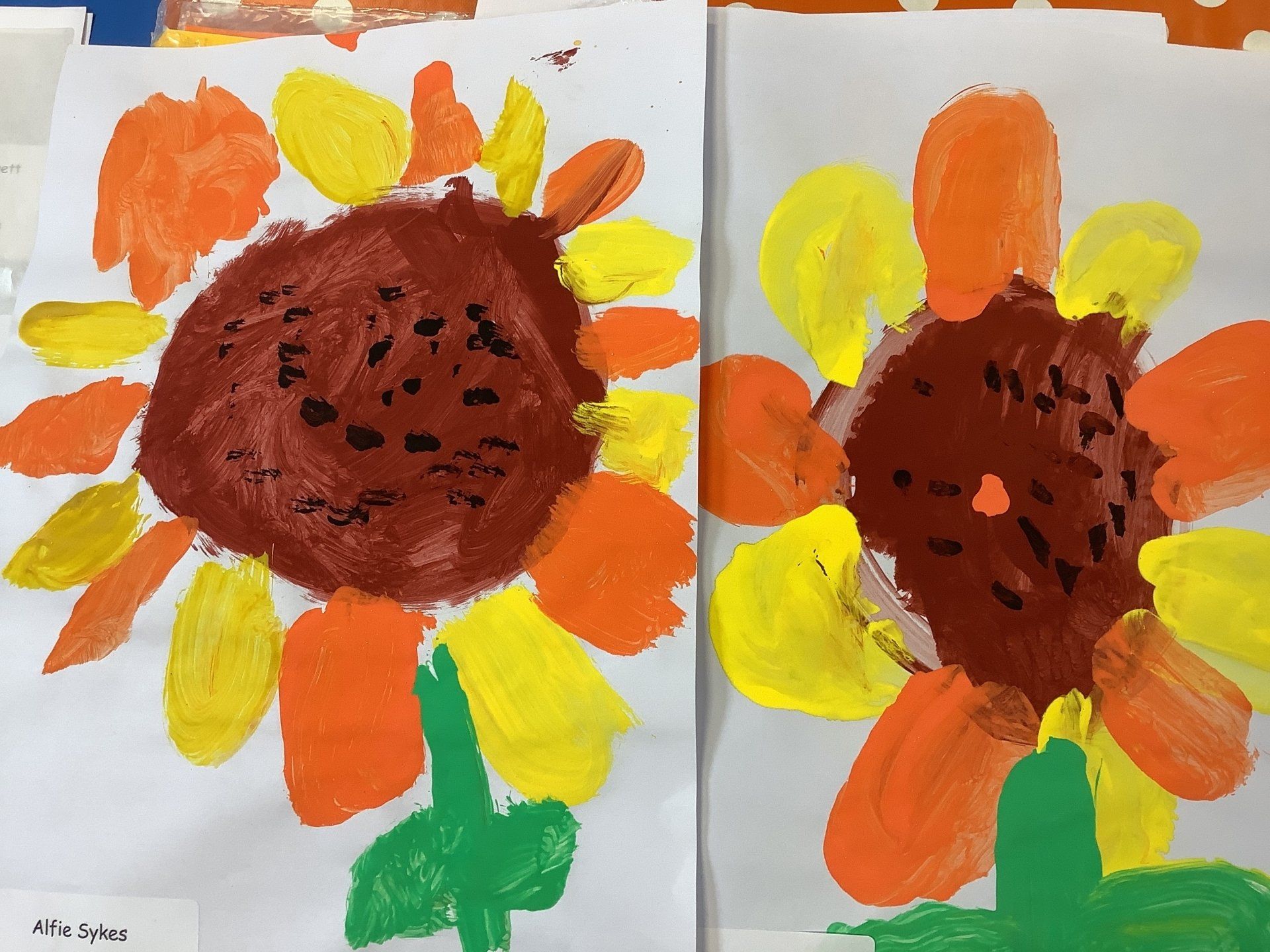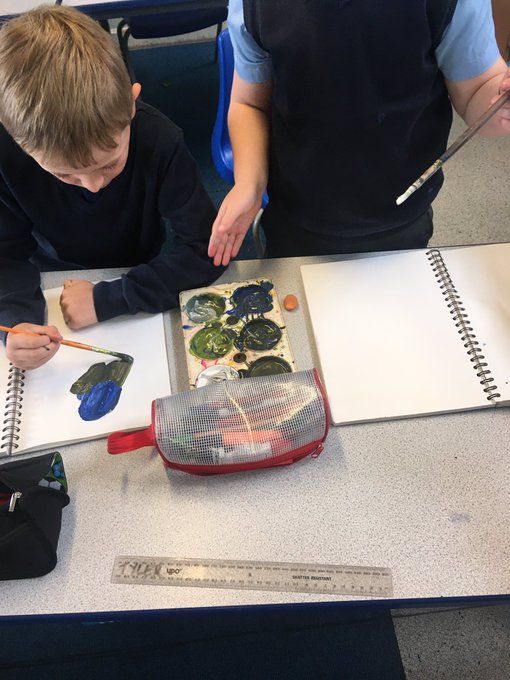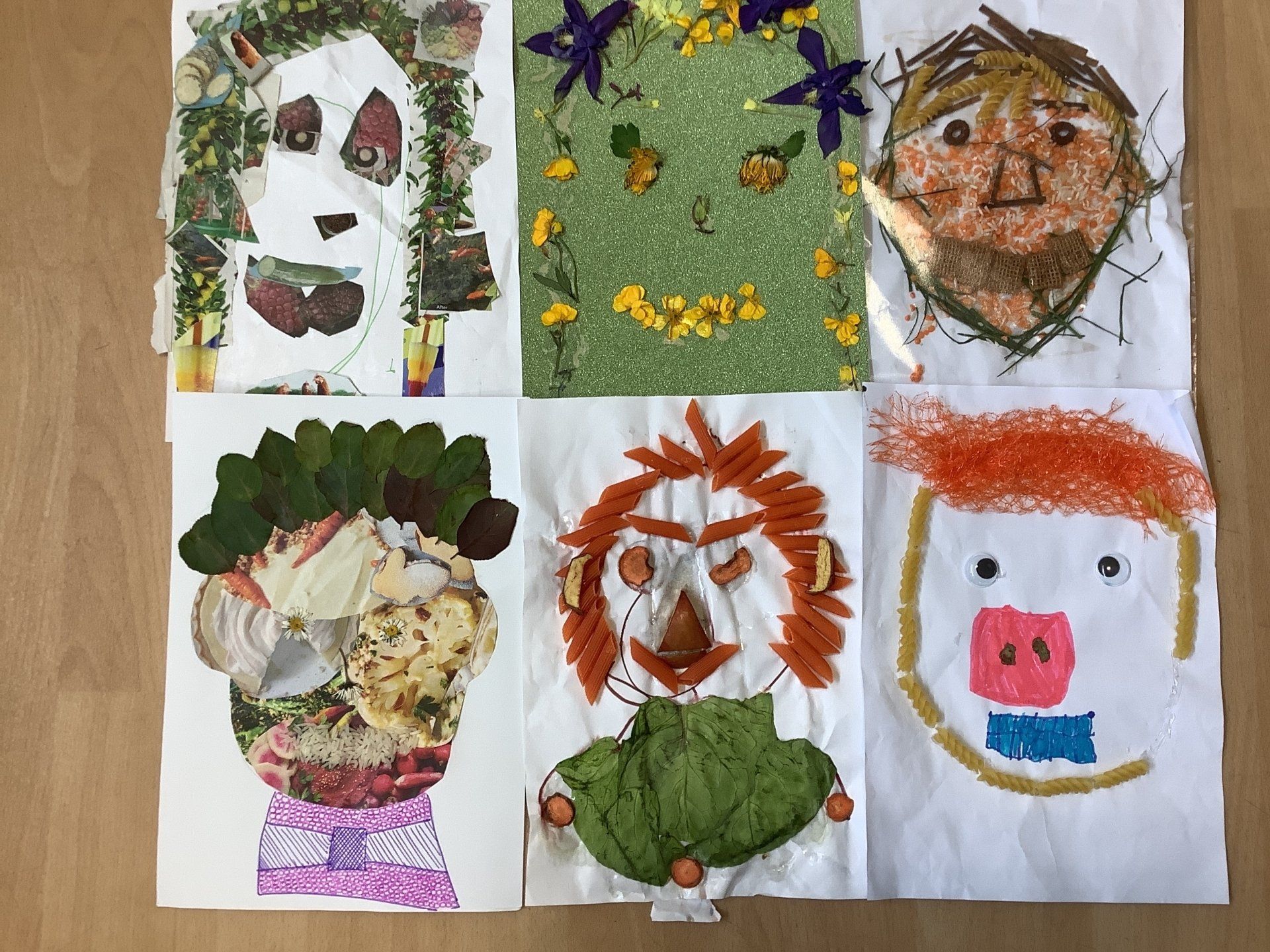Art
Art Statement of Intent
The teachers of St. James’ Catholic Primary School say…..
Art and Design is taught in a way that ensures progression of skills, and follows a sequence to build on previous learning. Our children gain experience and skills of a wide range of formal elements of art in a way that enhances their learning opportunities, enabling them to use art and design across a range of subjects to be creative and solve problems, ensuring they make progress.
We follow a broad and balanced Art and Design curriculum that builds on previous learning and provides both support and challenge for learners. Teachers regularly look at pupils’ work, especially over time as they gain skills and knowledge, observe how they perform in lessons and talk to them about what they know.
Our children enjoy and value Art and Design and know why they are doing things, not just how. Children understand and appreciate the value of Art and Design in the context of their personal wellbeing and the creative and cultural industries. Progress in Art and Design is demonstrated through regularly reviewing and scrutinising children’s work, in accordance with our Art and Design assessment policy to ensure that progression of skills is taking place through children’s personal development in creativity, independence, judgement and self-reflection.
Art & Design provides children with an opportunity to develop a range of generic skills such as attention to detail, personal organisation, presentation, pride and commitment to a finished piece through an iterative process of self reflection and decision making.
Through the wide variety of learning themes studied and media used, it helps children to develop both fine and gross motor skills. Children are encouraged to be independent thinkers and to communicate their ideas through sketchbook annotations, peer discussions and communication during whole class discussions.
Art & Design nurtures curiosity and allows children to appreciate the work of others, develop knowledge of different artists and make links to history and other cultures. It encourages children to respect diversity and encourages freedom and independence by giving children a choice and experience to be expressive. It provides no right or wrong answer and develops resilience through a continuing process of reflection and improvement.
Children have the opportunity to explore a range of different forms and media, developing a range of techniques and skills. Art can be taught anywhere and children can explore nature through outdoors art. Children can express their individuality and feel valued in doing so.
Children are continually given feedback and encouraged to self-reflect on the decisions they have made. They are never made to feel judged, but given advice which develops both their technical skills and creative ideas.
All year groups teach a skills topic and a formal elements topi. This is then followed by a pregressive themed approach. In the Early Years Foundation Stage and Key Stage One, the children develop a bank of skills and media which are taught through a range of learning themes which engage the children’s interests. Each year group in Key Stage 2 teaches two focused learning themes then provides an opportunity for children to embark on an ‘End of Year Project’ in which they are given a brief and asked to research current artists and related information, reflect on skills learned throughout school so far and make decisions about what they want to produce and why. Children are encouraged to take risks and be inventive. This learning process builds confidence and makes all children feel that their decision making and work produced is valued.
Art helps children to relieve stress and develop good mental health.
The children of St. James’ Catholic Primary School say…..
‘I enjoy art as it gives me a chance to express myself and to create something to be proud of. It relaxes me and helps me to connect with my creative side.”
“You can let your creative mind go wild.'
“Art can let the imagination go wild. It doesn’t have to be a creating picture, it can just be there. A spark. Abstractly drawn.”
“Art is one of my favourite subjects because it is so much fun
drawing and getting feedback from someone to improve your art.”
“I like art because I want to be an architect when I’m older. I like learning new skills that will help me when I’m older.”
“Art helps us express our feelings; we should do art to help us be creative. Art will help us see life in a different way.”
Art Long Term Plan
Art Skills Progression
Art Policy





